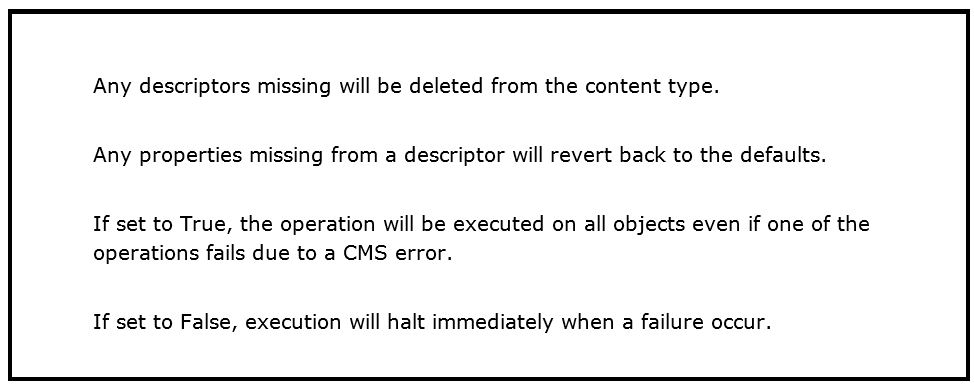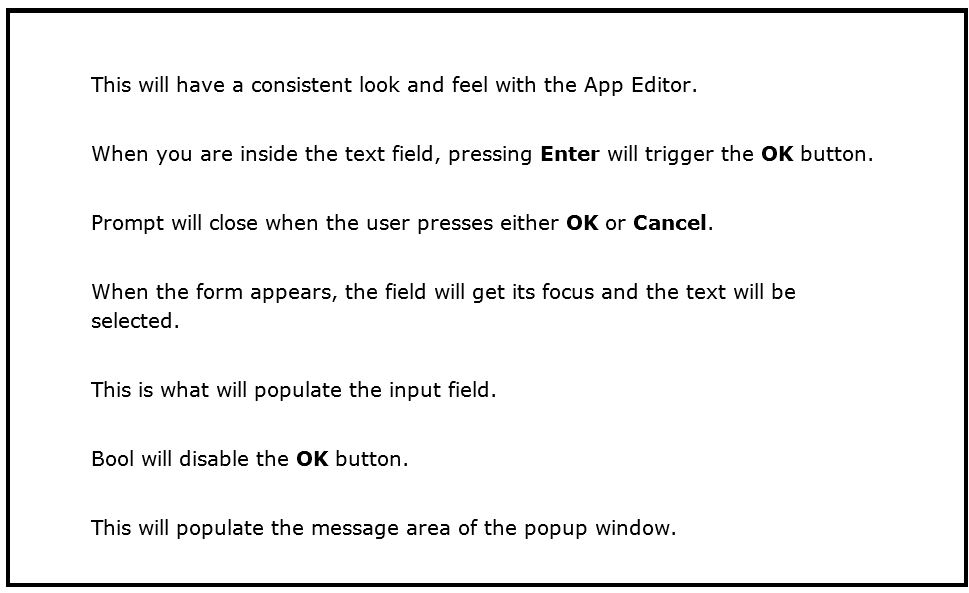IMPORTANT: This topic is about the future and present tense. However, all of the following examples contain discussions of multiple subjects—not just the future and present tense. Therefore, in addition to the future and present tense, you are going to learn a lot of different things about good writing and rewriting.
Example 1
REWRITE THESE SENTENCES

PROBLEM
Each example sentence is written in the future tense. We need to rewrite them using the present tense because these are things that are happening now, not just in the future.
DISCUSSION
Whenever you are tasked to write about something that is happening now in the present and will continue to happen in the future, it is always best to write in the present tense. Why? Because we live in the present. We do not and cannot live in the future.
Writing in the present tense includes both the present and the future. That inclusiveness is key. Unless we are told otherwise, we assume conditions of the present continue unchanged into the future.
Whenever you are tasked to write about something that is not happening now, but will happen at some point in the future, that is the time to use the future tense.
Typically, your reader needs to solve problems that exist right now. Continual reference to the future can be an irritating mannerism. Don’t risk annoying your reader. Keep your narrative in the present tense as much as possible.
REVISIONS
1
Before
Any descriptors missing will be deleted from the content type.
After
Any descriptors missing are deleted from the content type.
2
Before
Any properties missing from a descriptor will revert back to the defaults.
After
Any properties missing from a descriptor revert back to the defaults.
3
Before
If set to True, the operation will be executed on all objects even if one of the operations fails due to a CMS error.
After
If set to True, the operation is executed on all objects even if one of the operations fails due to a CMS error.
Or
If set to True, the operation executes on all objects even if one of the operations fails due to a CMS error.
4
Before
If set to False, execution will halt immediately when a failure occurs.
After
If set to False, execution halts immediately when a failure occurs.
Example 2
REWRITE THIS SENTENCE
 PROBLEM
PROBLEM
- Use the present tense instead of the future tense
- Change the passive voice to active voice
DISCUSSION
Passive Voice
An error will be thrown…. By whom or by what? Answer: The system. Make the word system the subject of the sentence.
Future Tense
In our example sentence, the system throws the error now, in the present, and will continue to throw the error in the future. It is an ongoing phenomenon. Unless we are told otherwise, we assume things that happen now will continue to happen in the future. The present tense includes the future tense—until conditions change.
However, this inclusiveness only runs in one direction. If a sentence is written in the future tense, you cannot automatically assume it works backwards to the present. It may include the present or it may not.
To be absolutely clear every time, write in the present tense.
REVISION
Before
An error will be thrown if the value is not included.
After
The system throws an error if you do not include the value.
Example 3
REWRITE THIS SENTENCE

PROBLEM
Our problem sentence talks about something that will happen in the future. But when you look carefully at the sentence, it is clear it describes something that is happening right now, too.
We live in the present, not the future. Don’t write in the future tense unless you have no choice. Excessive use of the future tense makes for tedious reading.
DISCUSSION
As a rule, always use the present tense unless the activity you describe only exists in the future. Use the present tense if the thing described exists now and will continue to exist in the future. On the other hand, if you describe a new activity the user can only perform after next year’s release, use the future tense.
REVISION
Before
As a consumer of the FakeApp 2.0 SDK, you will never have to worry about updating the guest data directly.
After
As a consumer of the FakeApp 2.0 SDK, you never have to worry about updating the guest data directly.
Example 4
REWRITE THIS SENTENCE
 PROBLEM
PROBLEM
Two problems:
- Wordiness
- Use of the future tense in the independent clause—it should be the present tense
DISCUSSION
Wordiness
Here is the sentence with the wordiness in brackets:
[In order] to [facilitate a restriction on] the number of concurrent active sessions, FakeMethod will need to track authorizations and token refreshes.
Present vs. Future
The sentence begins with the dependent clause—In order to facilitate a restriction on the number of concurrent active sessions.
The independent clause follows—FakeMethod will need to track authorizations and token refreshes.
Yes, it needs to track authorizations and token refreshes in the future. Does it do the tracking only in the future? How about right now?
You know the answer. It does the tracking now and continues to do the tracking in the future. Since it does the tracking now and continues to do the tracking in the future, don’t use the future tense. Put the independent clause in the present tense.
REVISION
Before
In order to facilitate a restriction on the number of concurrent active sessions, FakeMethod will need to track authorizations and token refreshes.
After
To restrict the number of concurrent active sessions, FakeMethod needs to track authorizations and token refreshes.
Example 5
REWRITE THIS SENTENCE

PROBLEM
The sentence ends with these words:
to which the file will be attached
Is the author describing current behavior or behavior that only happens in the future?
DISCUSSION
Yes, the file will be attached on occasions in the future. But think about it. Is this an activity that will only be available after some future software release, but is not available now? No. The author is describing a current feature. It is happening now.
When you write a feature description about something that happens now and will continue to happen in the future, write in the present tense. Do not write in the future tense.
Remember this always—we live in the present, not the past or the future. Thus, do your best to always write in the present tense.
REVISION
Before
This is the temporary file name used in a subsequent call to create or update the content object to which the file will be attached.
After
This is the temporary file name used in a subsequent call to create or update the content object to which the file is attached.
Example 6
REWRITE THESE SENTENCES

PROBLEM
In this short topic (270 words, including code snippets), the author shows us he really, really, really likes the future tense. Yet, when you examine each sentence, not one of the seven example sentences describes events that happen only in the future. These events happen now as well.
DISCUSSION
Since these events are happening now (present tense) and will continue to happen in the future (future tense), rewrite each sentence in the present tense. It is my firm belief that readers prefer the present tense over the past or future tenses. Why? Because we don’t live in the past or the future; we live in the present.
REVISIONS
Before
This will have a consistent look and feel with the App Editor.
When you are inside the text field, pressing Enter will trigger the OK button.
Prompt will close when the user presses either OK or Cancel.
When the form appears, the field will get its focus and the text will be selected.
This is what will populate the input field.
Bool will disable the OK button.
This will populate the message area of the popup window.
After
This has a consistent look and feel with the App Editor.
When you are inside the text field, pressing Enter triggers the OK button.
Prompt closes when the user presses either OK or Cancel.
When the form appears, the field gets its focus and the text is selected.
This is what populates the input field.
Bool disables the OK button.
This populates the message area of the popup window.
Example 7
REWRITE THIS SENTENCE
 PROBLEM
PROBLEM
Two problems:
- Use the present tense, not the future tense
- Clean up the wordiness
DISCUSSION
Future Tense
Don’t use the future tense for stuff that is happening right now. Here is the example sentence again:
This setup will be expected in order to make updates without having to repeatedly answer prompts for your password.
Are we talking about things that happen only at some point in the future? No, of course not. The statement describes current behavior.
Wordiness
The beginning of the sentence is wordy:
This setup will be expected in order to make updates
Say this instead:
You need this setup to make updates
The second part of the sentence is wordy, too:
without having to repeatedly answer prompts for your password
Say this instead:
without repeatedly answering prompts for your password
REVISION
Before
[19 words]
This setup will be expected in order to make updates without having to repeatedly answer prompts for your password.
After
[14 words]
You need this setup to make updates without repeatedly answering prompts for your password.
Example 8
REWRITE THIS SENTENCE
 PROBLEM
PROBLEM
We need to fix these things:
- Passive voice
- Present vs. future
- Punctuation
- Simple sentences
- Spelling
DISCUSSION
Passive Voice and Spelling
The sentence begins:
Once a snapshot is build from the develop branch….
Who builds the snapshot? You do. Make the sentence active voice with You as the subject.
In the original passive voice construction, the word build is incorrect. The verb should be built. However, in our revision, with You as the subject, the verb build is correct.
Once you build a snapshot from the develop branch….
Present vs. Future, Punctuation, and Simple Sentences
The sentence reads:
…the corresponding documents will be pushed to the branch gh-pages-develop, likewise a commit to master will trigger a document update on gh-pages-master.
We have a comma fault before the word likewise. Start a new sentence there.
Change the future tense will be pushed to are pushed, and change the future tense will trigger to triggers.
Change the entire passage to this:
…the corresponding documents are pushed to the branch gh-pages-develop. Also, your commit to master triggers a document update on gh-pages-master.
REVISION
Before
Once a snapshot is build from the develop branch, the corresponding documents will be pushed to the branch gh-pages-develop, likewise a commit to master will trigger a document update on gh-pages-master.
After
Once you build a snapshot from the develop branch, the corresponding documents are pushed to the branch gh-pages-develop. Also, your commit to master triggers a document update on gh-pages-master.
Example 9
REWRITE THIS API DESCRIPTION

PROBLEM
In every place where you see the future tense, change it to the present tense.
DESCRIPTION
People, we do not live in the future. We live in the present. Everything mentioned in this API description happens right now. Write accordingly.
Here is the example API description again with the future tense in hot pink:
Sets the preferred language for the current user session. This preference will indicate the language in which UI rendering and email sending will occur.
REVISION
Before
Sets the preferred language for the current user session. This preference will indicate the language in which UI rendering and email sending will occur.
After
Sets the preferred language for the current user session. This preference indicates the language in which UI rendering and email sending occurs.
Example 10
REWRITE THIS SENTENCE

PROBLEM
This sentence is in the future tense. Convert everything to the present tense.
DISCUSSION
1
Don’t say this:
we will provide
Say this:
we provide
2
Don’t say this:
where suppression requests will be sent
Say this:
where suppression requests are sent
3
Don’t say this:
and they will link to this URL in the email body
Say this:
and they link to this URL in the email body
REVISION
Before
When a third party sends email on our behalf, we will provide the third party with a URL where suppression requests will be sent, and they will link to this URL in the email body.
After
When a third party sends email on our behalf, we provide the third party with a URL where suppression requests are sent, and they link to this URL in the email body.

